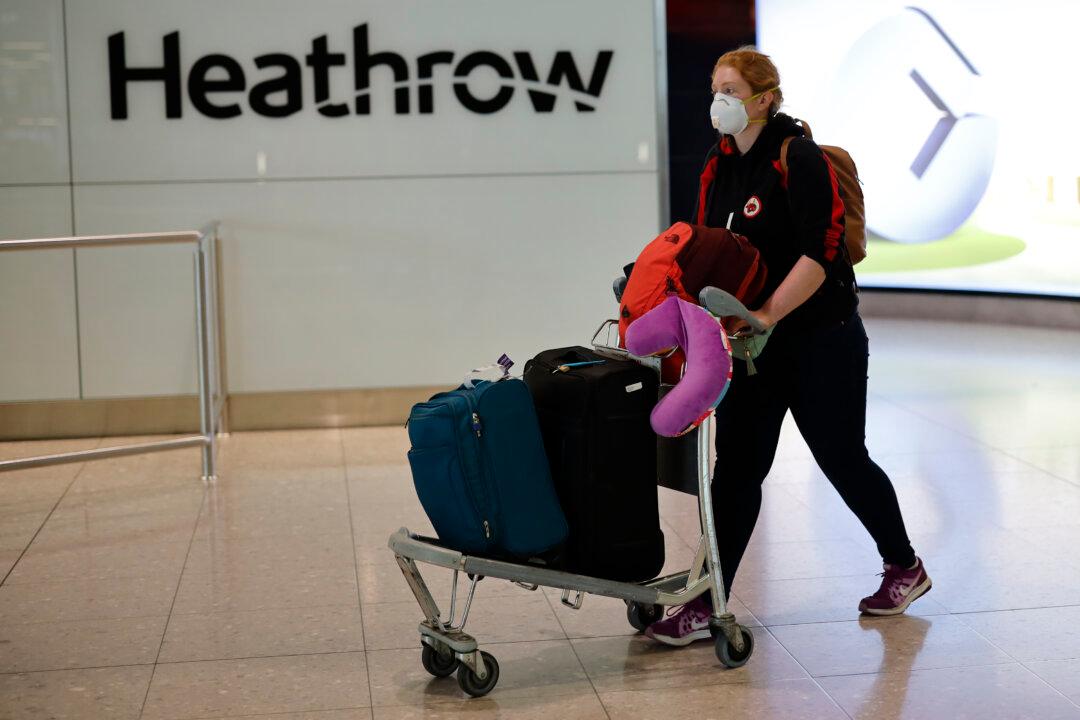The decision not to test passengers flying into the UK for the CCP virus was based on flawed analysis, according to a new study.
Instead of catching just 7 percent of infected travelers, as the government was advised earlier in the pandemic, testing on arrival could identify over 63 percent.





